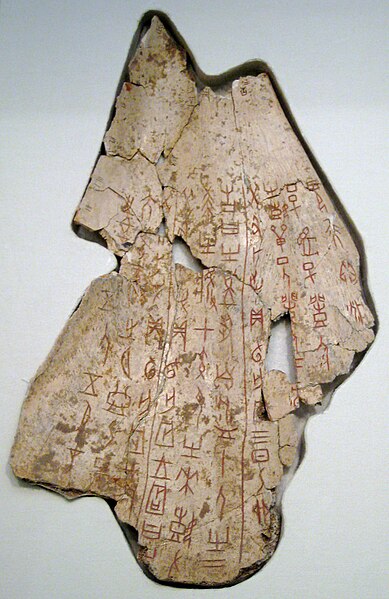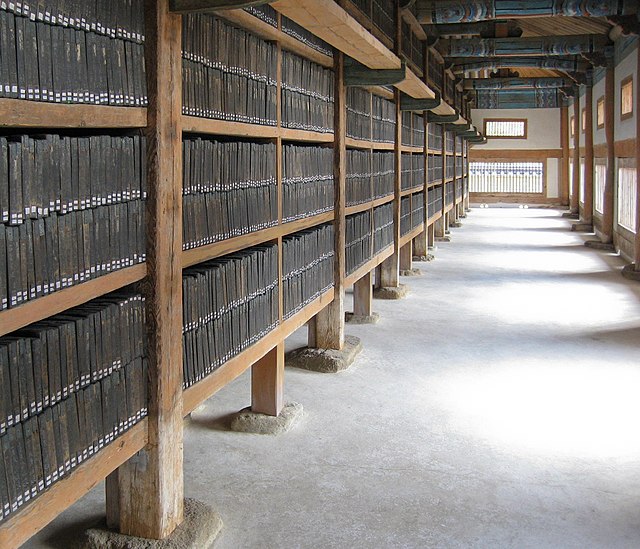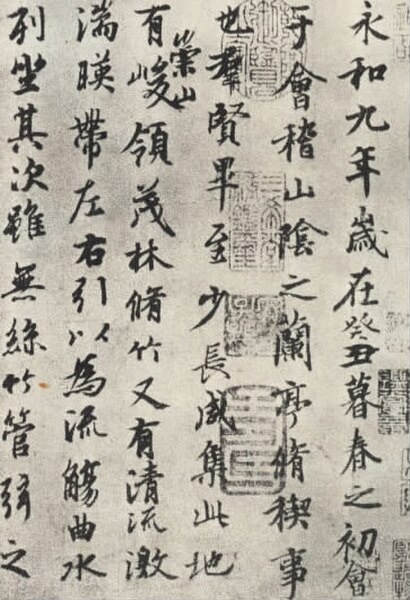Old Chinese, also called Archaic Chinese in older works, is the oldest attested stage of Chinese, and the ancestor of all modern varieties of Chinese. The earliest examples of Chinese are divinatory inscriptions on oracle bones from around 1250 BC, in the Late Shang period. Bronze inscriptions became plentiful during the following Zhou dynasty. The latter part of the Zhou period saw a flowering of literature, including classical works such as the Analects, the Mencius, and the Zuo zhuan. These works served as models for Literary Chinese, which remained the written standard until the early twentieth century, thus preserving the vocabulary and grammar of late Old Chinese.
Rubbing of a Zhou dynasty bronze inscription, c. 825 BC
Shang dynasty oracle bone script on an ox scapula
Seal script on bamboo strips from the Warring States period
Chinese is a group of languages spoken natively by the ethnic Han Chinese majority and many minority ethnic groups in China. Approximately 1.35 billion people, or 17% of the global population, speak a variety of Chinese as their first language.
The Tripitaka Koreana, a Korean collection of the Chinese Buddhist canon
"Preface to the Poems Composed at the Orchid Pavilion" by Wang Xizhi, written in semi-cursive style





